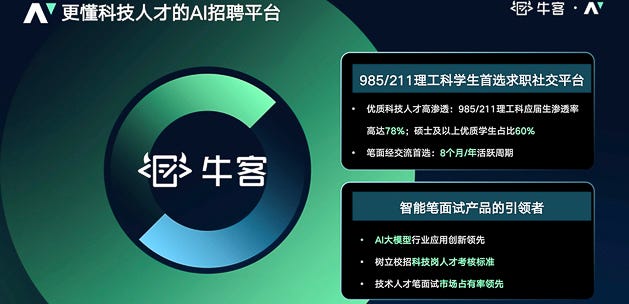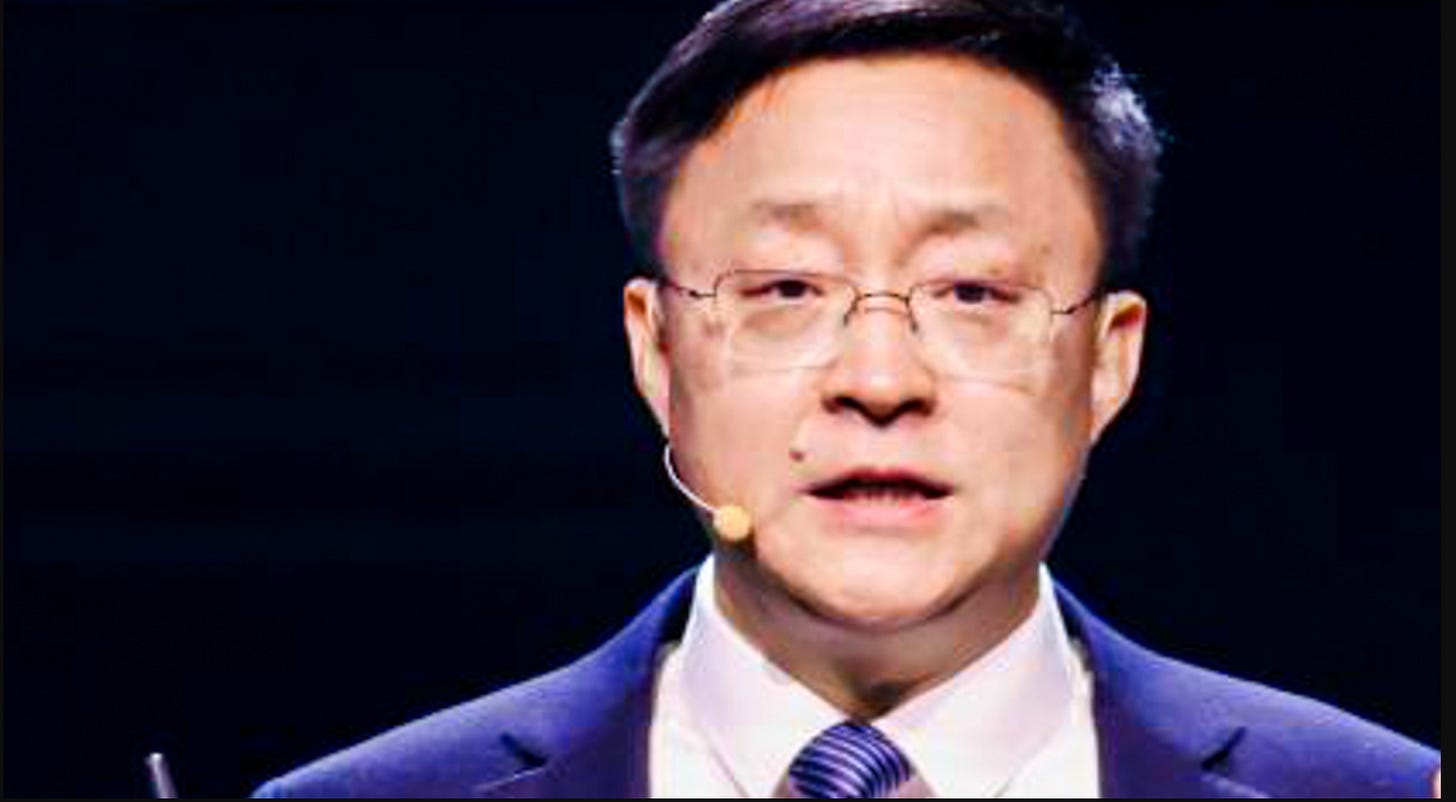AI hits the workforce—how will this shift policy?
calls for ‘universal basic income’-style support
learning must be reinvented for lifelong adaptability
leverage ‘AI+’ to match workers with emerging roles
Employment is failing to grow, warns Cai Fang 蔡昉 social scientist and PBoC adviser. He questions optimism about technology creating jobs. Take robots as a case in point: CASS, with which Cai is associated, confirms that jobs kept being created in net terms until 2012; net decline was the story thereafter. Today's high natural jobless rate—not to say crisis—follows in train.
Like past tech advances, AI will both displace and create jobs, accepts Zhang Dandan 张丹丹 Peking University. Transition from ‘old’ to ‘new’ occupations, she contends, is what drives short-term joblessness and skill mismatches.
a mid-skilled employment crisis
AI disruption may outpace past tech revolutions in scale and scope. As well as low-skilled, repetitive roles, today’s AI ever more displaces mid- and high-skilled ones, Cai Fang reasons.
Disproportionately benefiting capital investment over labour, AI amplifies income polarisation, above all, at the cost of mid-skilled workers, warn Lu Yan 卢艳 Guangzhou Institute for Guangdong–Hong Kong–Macao Greater Bay Area Studies and Gui Lincui 桂林翠 China Population and Development Research Centre.
Roles replaceable by LLMs (large language models, like ChatGPT or DeepSeek) saw demand fall off. Educational and experience criteria meanwhile rose, and salary gaps widened 2018—23, finds Yu Hang 于航 Peking University. Current LLMs tend to replace rather than complement jobs, this shows. New tech will create previously non-existent roles, notes Yu, but that stage has yet to be reached.
Other studies see danger ahead for mid-skilled jobs. Labour demand grows most where there is low LLM exposure— the realm of kitchen hands and cooks, tractor operators, cleaners, and carpenters. Conversely, demand for highly LLM-exposed roles—accountants, auditors, editors, sales staff, coders etc.—has fallen rapidly.
AI mainly impacts cognitive work. Data from 1.25 mn postings on jobs platform Zhaopin January 2018–May 2024, shows average exposure to LLMs by task. It was at its highest in procedural white-collar, lowest in interpersonal blue-collar roles.
stronger social security
PRC social security is poorly prepared for AI-driven job displacement. Cai Fang highlights rising informal employment (over 200 million workers as of 2023), characterised by lower wages, longer hours, inadequate protections, and instability. He urges boosting state expenditure through 2035, expanding all-around social security, and saving those displaced from exile to lower-productivity sectors.
Liu Qingfeng 刘庆峰 iFlyTek chair and NPC delegate, urges piloting platforms that give early warning of job losses in manufacturing hubs, e.g. the Yangtze and Pearl river deltas. There should be a buffer period of 6–12 months, and ‘AI unemployment insurance’ for those most affected.
Radical transformation entails radical solution: a 'future starting income' modelled on ‘universal basic income’ was suggested by Zhai Dongsheng 翟东升 Renmin University, in 2022. Starting at C¥300 per month in 2025, it would rise to some C¥1,000 by 2035. The point is to compensate those displaced. Payouts would end after age 35, apparently to curb welfare dependency.
Such ‘temporary’ job disruption has its opponents. He Bin 贺滨 CASS Institute of Economic Research, for example, argues against overly cautious or delayed tech deployment, such as restricting taxi replacement with robotaxis. In his view, it harms tech firms and innovation. The state must aim for fairness of rights, not of outcomes. Governance, he adds, must prioritise long-term tech advances over short-term joblessness mitigations.
lifelong learning under AI?
Education must rapidly adapt to AI. The ‘half-life’ of knowledge has crashed from two or three decades in the industrial era to just five or six years today. Some fields, points out Xu Fei 徐飞 Fuyao University of Science and Technology, see cycles of a year or less. Some 60 percent of students' professional knowledge is, by this token, outdated by graduation, warns Xu, creating latency between acquisition and use of knowledge, and challenging conventional teacher-directed, textbook-based paradigms in higher education.
Transformation is hence imperative, readying the young for lifelong learning and entrepreneurship, urges Chu Ruxin 褚如心 Beijing Union University: Only if young people develop new skills would AI risks be eased.
There are responses in the pipeline. Measures to raise AI literacy among students and teachers were launched by Huai Jinpeng 怀进鹏 Minister of Education at the 2025 World Digital Education Conference. They include guidelines for merging AI into primary and secondary curricula, and a prototype AI science mentor for younger students. MoE hopes to match graduates’ skills both to market needs and state strategies, helping universities meet evolving skill demands and train interdisciplinary AI talent.
leveraging ‘AI+’ employment
Cai advises strategically directing AI applications toward productivity-boosting industries with the least possible job displacement, echoing Nobel laureate economist Daron Acemoglu.
Beijing's 'AI+ employment' model includes matching citizens with jobs via employment service platforms. Personal digital employment profiles are being created for students at Qingdao University of Technology. Given data on students’ academic performance, internships, practical experience, social service and extracurricular activities, QUT will provide tailored job information and recommend students to employers.
AI talent is ever more specialised, notes Lu Feng 卢峰 Hangzhou Dianzi University Admissions and Employment. A recruitment drive there offered over 6,000 AI positions, with AI roles comprising 52 percent, ranging from algorithm development to industrial internet.
A robust AI talent ecosystem entails merging the needs of state, industry, academia, and R&D, urges Zhang Chenggang 张成刚 Capital University of Economics and Business and China New Employment Forms Research Centre.
mapping the AI future
Cai Fang 蔡昉 | CASS academician and People’s Bank of China Monetary Committee member
Cai identifies three fundamental changes in human capital requirements in the AI era
uniquely human abilities develop in early childhood
competition has evolved from person-to-person to person-to-AI
human capital must be enriched lifelong, and rated on far more than 'years of education'
Developing PRC human capital, for Cai, entails seriously boosting public education investment, with resource fairness and extending the term of education (both early and continued ed.).
Cai urges dramatically improved social security with ever more universal and safety-net traits. With AI, labour is dramatically more productive: deeming some workers more or less ‘reskillable’ or indeed ‘deserving’ loses traction. Labour market institutions remain crucial, he concludes, requiring timely new institutions.
Renowned demographer Cai took a PhD in economics from the CASS Graduate School in 1989, rising to a vice presidency. Active on the PBoC Monetary Policy Committee from 2021, he has been prolific on labour economics, income distribution, and economic reform. Cai is currently the chief expert of CASS National Think Tanks and chair of the Silk Road Research Institute.
Liu Qingfeng 刘庆峰 | iFlyTek chair and Chinese Academy of Sciences AI innovation alliance co-chair
Proactive measures are needed, argues Liu, to protect workers while ensuring tech advances.
planning AI careers: cataloguing new roles and better certifying jobs, while urging universities to adjust curricula and provide targeted training, not least free programs for low-income groups
monitoring all-round ‘employment monitoring-early warning-response’; piloting jobs-risk warning in the Yangtze River Delta and similar hubs. Heavy users of AI must report job loss and re-employment plans, ensuring tech application and social equity develop together
offering 6-12 month jobless buffer periods with specialised ‘AI job loss protection insurance’, using state-led investment and commercial operation models. This provides targeted safety nets for high-risk displacement sectors while guiding insurers to develop unemployment protection.
Co-chair of the CAS AI innovation alliance, Liu founded iFlyTek in 1999 while pursuing a doctorate at China University of Science and Technology (Hefei). Under his chairmanship, it has become a leading speech synthesis firm. A National People’s Congress delegate, Liu frequently comments on AI regulations and development.
Zhang Dandan 张丹丹 | Peking University national school of development professor
Job loss due to AI will intensify, warns Zhang, eroding white-collar roles via LLMs. Since conservative AI adoption in the PRC slows productivity gains, some jobs that could have been completed domestically in China have instead been outsourced abroad (e.g., computer graphics). Address emerging skill demands, she urges, via education reform, whatever the employment risks.
Social security reform for gig workers is crucial in the digital economy, argues Zhang. Traditional formal jobs fall away, while platform-based flexible work consolidates as a long-term norm. Resolving the tradeoff between flexibility and protection, she argues, entails policy innovation, decoupling social security from hukou, and setting up flexible, sustainable, collaborative social security frameworks.
In PRC manufacturing, tech automates routine tasks, reducing mid-skilled jobs but preserving demand for low-skilled manual labour, points out Zhang. ‘Gigification’ (línggōng jīngjì huà) is driven by industry clustering, market volatility and policy. This entails balancing worker flexibility with labour rights via adaptive social safeguards and management.
An Australian National University PhD, Zhang Dandan is an economics professor and a vice dean at Peking University’s National School of Development, specialising in labour economics, inequality, the gig economy, and AI job transition. She advises state agencies on employment policy and frequently comments on labour and women's issues in the context of tech transformation.








